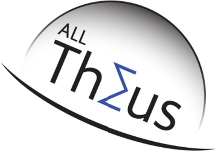NEEDY NEDE BEGINNINGS OF OUR HYGGE UNIVERSE
Nobel laureate (now the Australian National University’s Vice-Chancellor Brian Schmidt) did groundbreaking work showing the universe’s expansion is accelerating inducing a dark energy-powered (& perhaps pinot powered) headache for many. How fast our universe is expanding is still a contentious question.
Leila Sloman writing in Scientific American (29 July 2019) described the issue thus:
“One might assume scientists long ago settled this basic question, first explored nearly a century ago by Edwin Hubble. But right now the answer depends on who you ask. Cosmologists using the Planck satellite to study the cosmic microwave background—light from the “early” universe, only about 380,000 years after the big bang—have arrived at a high-precision value of the expansion rate, known as the Hubble constant (H0). Astronomers observing stars and galaxies closer to home—in the “late” universe—have also measured H0 with extreme precision. The two numbers, however, disagree. According to Planck, H0 should be about 67—shorthand for the universe expanding some 67 kilometers per second faster every 3.26 million light-years. The most influential measurements of the late universe, coming from a project called Supernova H0 for the Equation of State (SH0ES), peg the Hubble constant at about 74.
This discrepancy—the so-called Hubble tension—has been growing for years.”
Our wonderful science and engineering technology and people have enabled this era of precision cosmology as we make tentative steps towards working out just what makes up the unknown c95% of the Universe’s mass-energy. Dark energy is definitely the largest part of this intriguing puzzle. Dr Florian Niedermann & Professor Martin S Sloth of the University of Southern Denmark recently released more Center for Cosmology and Particle Physics Phenomenology-related research suggesting the NEDE (New Early Dark Energy) component may resolve the tension between measurements of the Universe’s expansion rate and the expansion rate inferred from the early Universe using the Cosmic Microwave Background.
Listen to a good accessible summary of their arXiv.org paper with Australia’s large (or at least tall) astronomer Professor Fred Watson with Andrew Dunckley on their popular Space Nuts podcast with the episode from 20 May 2021 here about 25 min, 30 sec in.
And is just a coincidence that converting the estimated Hubble Constant from kilometres to miles is about 42!? Maybe Douglas Adams and his white mice were onto something after all.
Leila Sloman's Scientific American article on the Hubble Tension headache from 29 July 2019
